API Integration Vs File Transfer
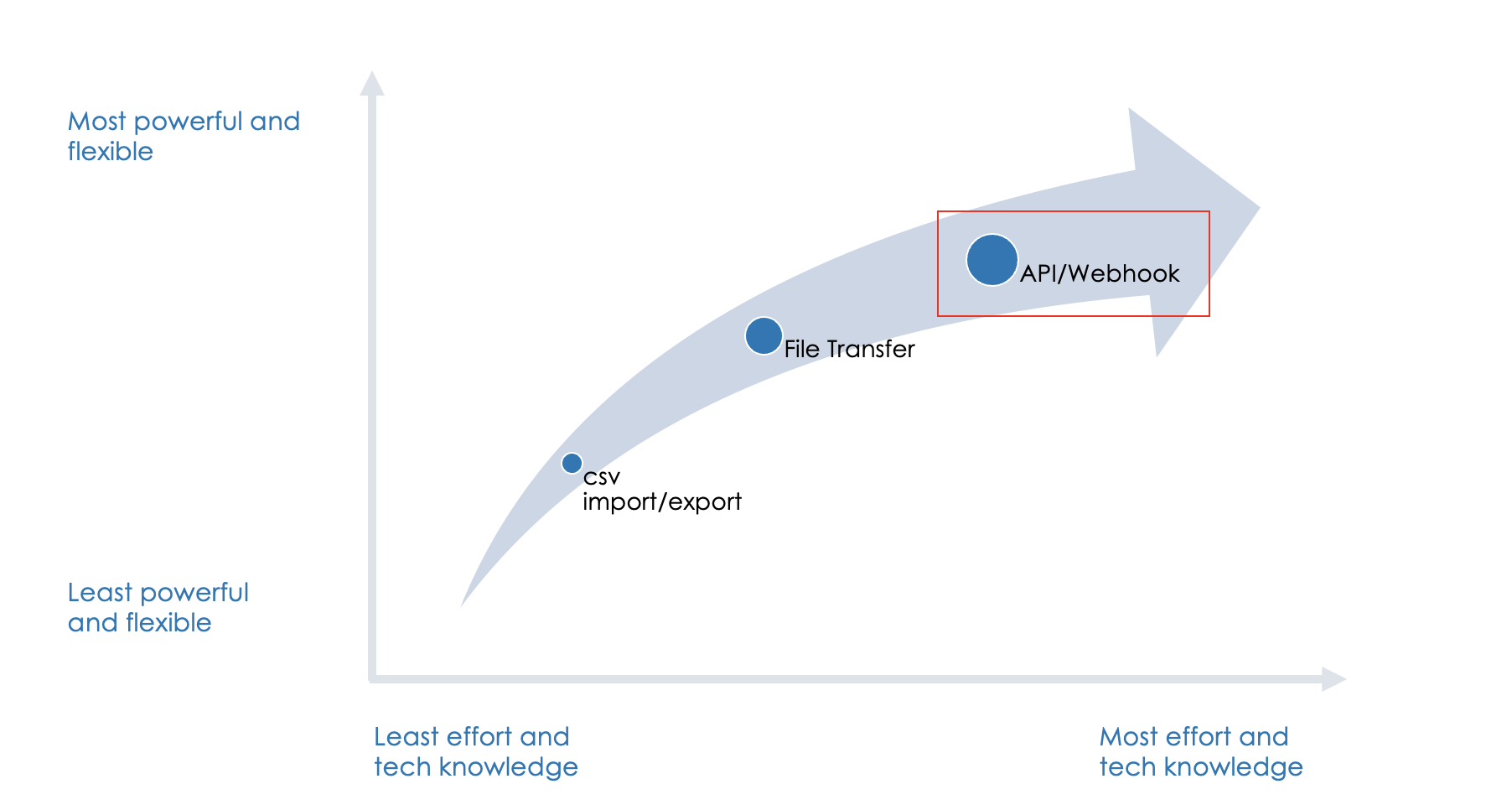 APIs (Application Programming Interfaces) offer several advantages over traditional file transfer methods for data exchange:
APIs (Application Programming Interfaces) offer several advantages over traditional file transfer methods for data exchange:
Speed and Real-time Updates
APIs can retrieve and deliver data directly between applications, enabling real-time updates and faster integration compared to file transfers, which involve scheduling and waiting for transfers to complete.
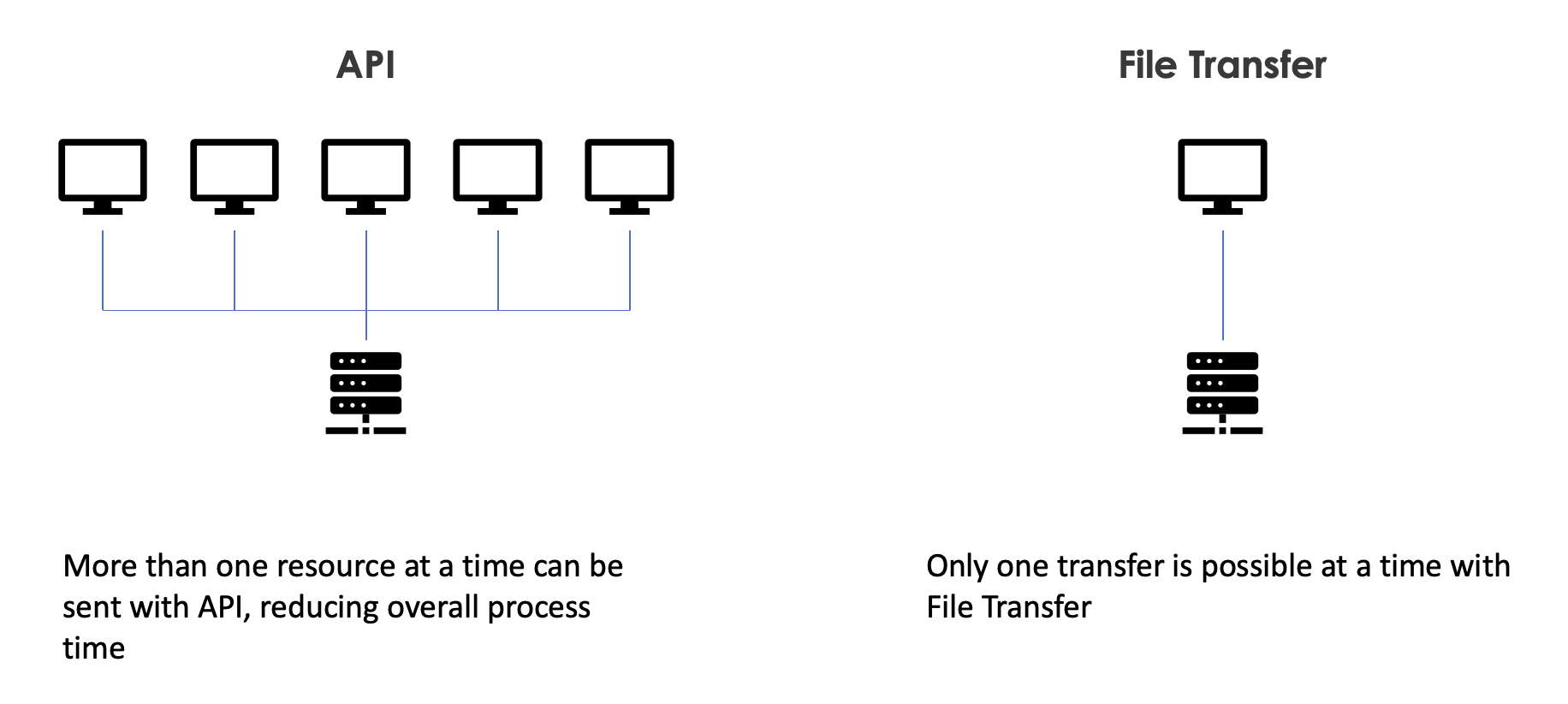
Accuracy and Data Validation
APIs can often validate data during transfer, reducing the risk of errors and inconsistencies that might occur in flat files.
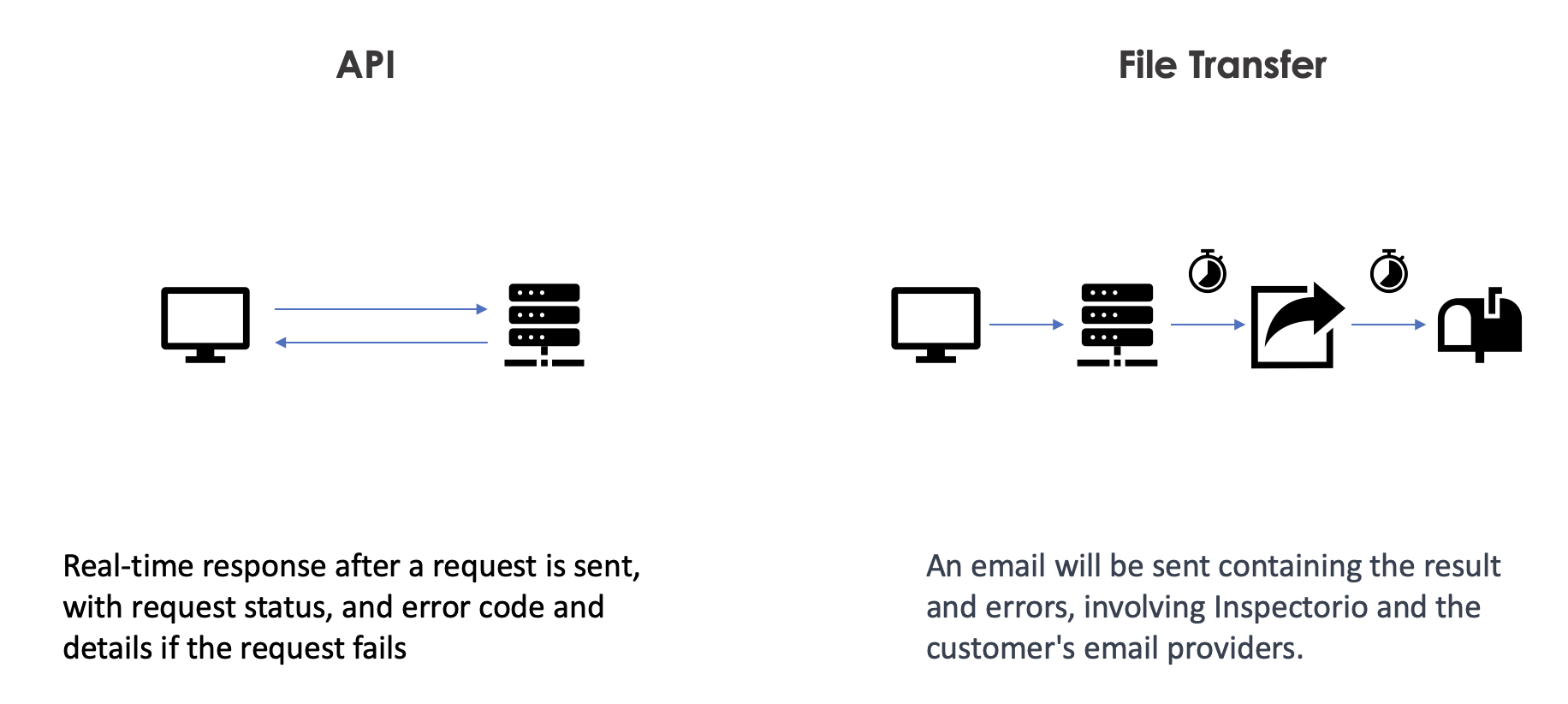
Flexibility and Customization
APIs allow for more targeted data exchange, enabling retrieval of specific data elements instead of entire files. This can streamline data processing and reduce storage needs.
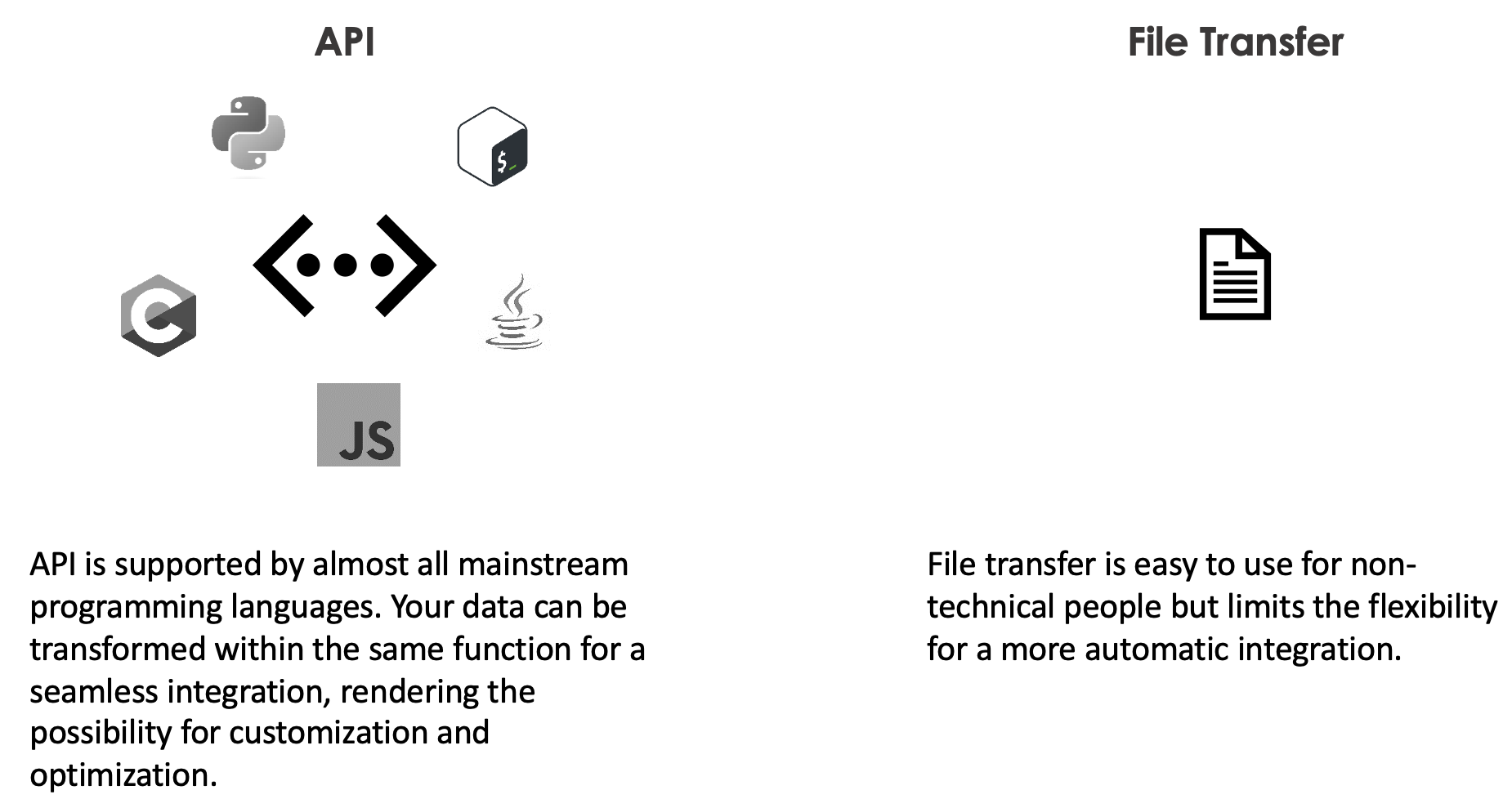
Automation and Scalability
APIs can be easily automated to trigger data exchange based on events or schedules. They also tend to scale better for handling large data volumes compared to file transfers.
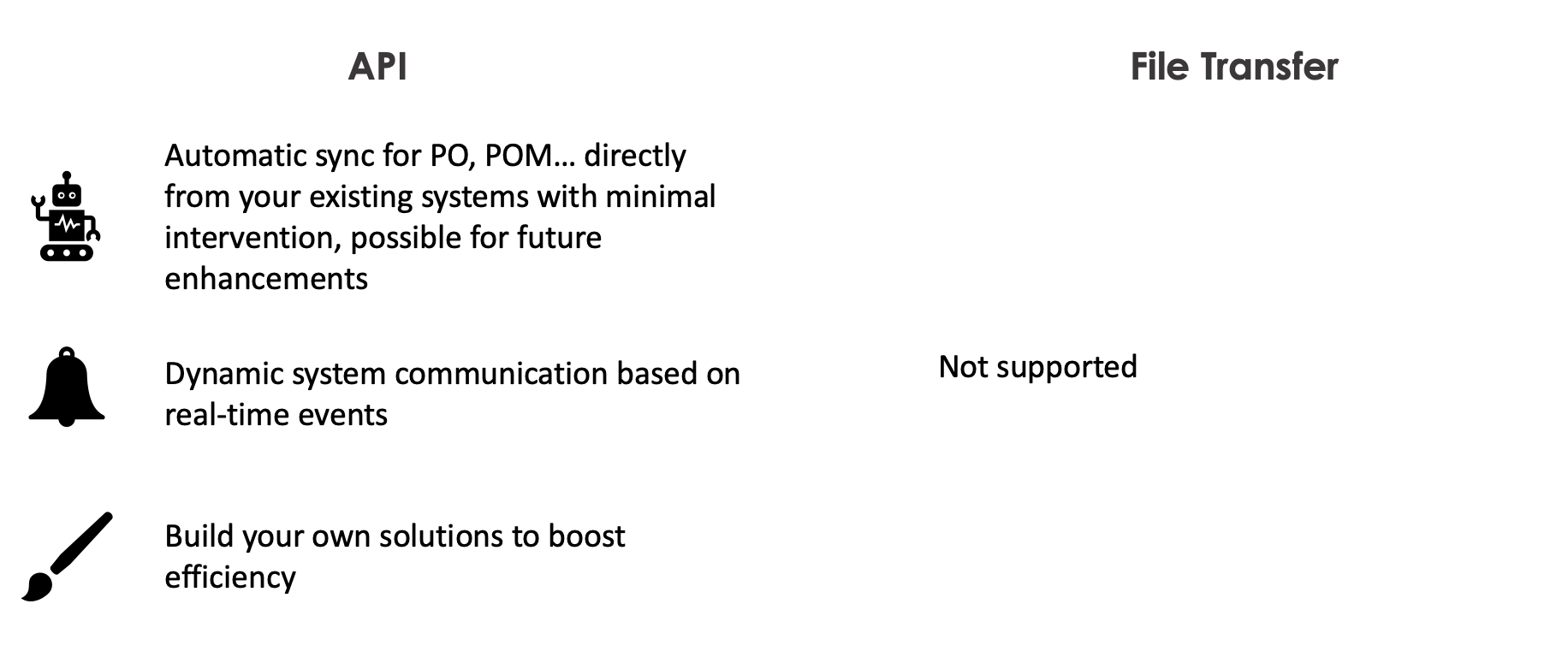
Key differences
| Feature | File Transfer | API |
|---|---|---|
| Data Transfer Method | Secure file delivery (SFTP, FTP) | Requests and Responses |
| Use Case | Bulk data transfers | Real-time data exchange, integration |
| Complexity | Straightforward transfer process | Can handle complex data structures and interactions |
| Flexibility | Limited | Allows for customized data exchange |
File transfers, however, are still a viable option in certain scenarios:
-
Large Batch Data Transfers: Transferring massive datasets might be more efficient with file transfers due to bandwidth limitations or cost considerations with APIs.
-
Simple Data Exchange: For occasional exchanges of basic data with no need for real-time updates, file transfers can be a simpler solution.